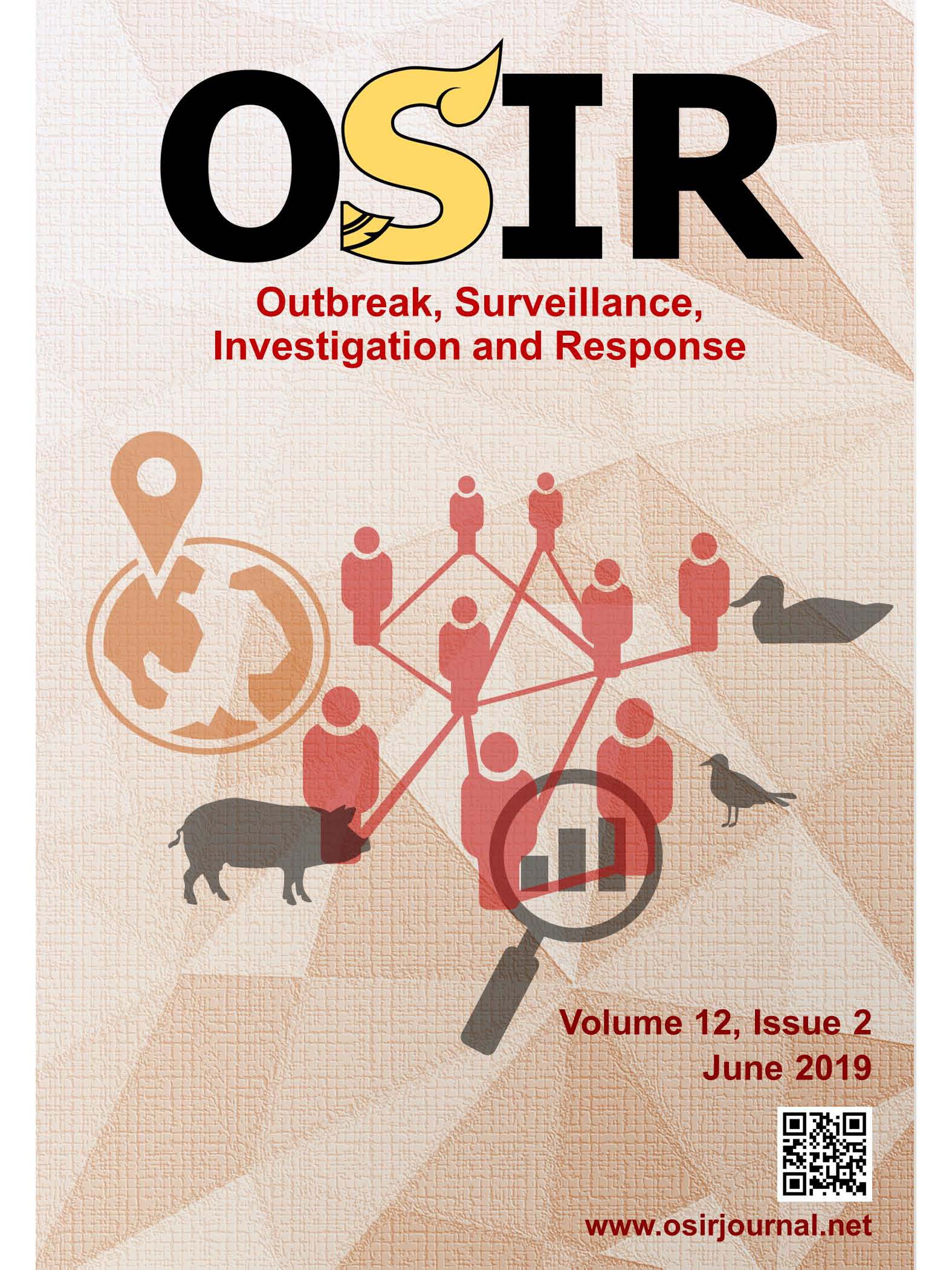Field Evaluation of Malaria Surveillance System in Sai Yok District, Kanchanaburi Province, Thailand
DOI:
https://doi.org/10.59096/osir.v12i2.262964Keywords:
malaria, surveillance evaluation, Global Fund, human resourcesAbstract
Evaluation of the malaria surveillance system was conducted in Sai Yok District, Kanchanaburi Province, Thailand. The objective of the study was to describe the surveillance system and assess the system performance in reporting malaria cases. The study applied cross-sectional approach. Key qualitative and quantitative attributes were assessed. Document review on malaria cases treated in Sai Yok Hospital and data collection at Vector Borne Disease Control Unit (VBDU) in 2015 were performed. In-depth interviews with policy makers and health care workers were exercised. Findings showed that sustainability of the surveillance system might be undermined if the Global Fund support would curtail after 2017. There were some discrepancies between number of cases reported by VBDU and those by health facility via the R506 national reporting system. Sensitivity of VBDU reports was slightly higher than the reports by the hospital though the overall sensitivity of the whole district was of acceptable quality. Concerning policy recommendations, a substantial shift of budgetary support from the Global Fund to domestic resources was suggested. Health personnel at the hospital should be more emphasized on the utilization of R506 reporting system. In addition, the R506 reporting system and the VBDU system should be harmonized.
References
World Health Organization. World malaria report 2015. Geneva: World Health Organization; 2015.
Thailand. Bureau of Vector Borne Diseases. Department of Disease Control. Ministry of Public Health. Malaria program review. Nonthaburi: Department of Disease Control; 2015.
Thailand. Bureau of Vector Borne Diseases. Department of Disease Control. Ministry of Public Health. Programmatic review of the national malaria programme in Thailand. Nonthaburi: Department of Disease Control; 2015.
Bloland P, Williams H. Malaria control during mass population movements and natural disasters. Washington DC: National Academies Press; 2002.
Thailand. Bureau of Vector Borne Diseases. Department of Disease Control. Ministry of Public Health. National monitoring and evaluation plan for malaria control and elimination in Thailand. Nonthaburi: Department of Disease Control; 2016.
Faculty of Tropical Medicine. BIOPHICS history. 2008 [cited 2019 Apr 12]. <http://www.biophics.org/index.php/about-us/biophics-history#HISTORY>.
Patcharanarumol W, Thammatacharee N, Kittidilokkul S, Topothai T, Thaichinda C, Suphanchaimat R, et al. Thailand's HIV/AIDS program after weaning-off the global fund's support. BMC Public Health. 2013;13(1008):1471-2458.
German RR, Lee LM, Horan JM, Milstein RL, Pertowski CA, Waller MN; Guidelines Working Group Centers for Disease Control and Prevention (CDC). Updated guidelines for evaluating public health surveillance systems: recommendations from the Guidelines Working Group. MMWR Recomm Rep. 2001 Jul 27;50(RR-13):1-35; quiz CE1-7.
The Global Fund. Policy on eligibility criteria, counterpart financing requirements, and prioritization of proposals for funding from the Global Fund. Geneva: The Global Fund; 2011.
Thailand. Bureau of Vector Borne Diseases. Department of Disease Control. Ministry of Public Health. A guideline for partnership for containment of artemisinin resistance and moving towards the elimination of Plasmodium in Thailand. Nonthaburi: Department of Disease Control; 2014.
Chehab MA, Bala MO, Al-Dahshan A, Selim NA, Al-Romaihi HE, Al-Thani M, et al. Evaluation of the completeness and timeliness of national malaria surveillance system in Qatar, 2016. Cureus. 2018;10(6):e2851-e.
Ibrahim BS, Abubakar AA, Ummulkhulthum AB, Nguku PM. Evaluation of the malaria surveillance system in Kaduna State, Nigeria 2016. Online Journal of Public Health Informatics. 2017;9(1):e177.
Rae JD, Nosten S, Proux S, Myint Thu A, Cho WC, Paw K, et al. The role of monitoring and evaluation to ensure functional access to community-based early diagnosis and treatment in a malaria elimination programme in Eastern Myanmar. Malar J. 2019 Feb 22;18(1):50.
Wangdi K, Banwell C, Gatton ML, Kelly GC, Namgay R, Clements AC. Malaria burden and costs of intensified control in Bhutan, 2006-14: an observational study and situation analysis. Lancet Glob Health. 2016 May;4(5):e336-43.
Yin RK. Case study research: design and methods. 3rd ed. California: Sage Publications, Inc; 2003.
Malaria Consortium. Partnership for containment of artemisinin resistance and moving towards the elimination of Plasmodium in Thailand. 2016 [cited 2019 May 1]. <https://www.malariaconsortium.org/what-we-do/projects/17/partnership-for-containment-of-artemisinin-resistance-and-moving-towards-the-elimination-of-plasmodium-in-thailand>
Downloads
Published
How to Cite
Issue
Section
License
Copyright (c) 2023 Outbreak, Surveillance, Investigation & Response (OSIR) Journal

This work is licensed under a Creative Commons Attribution-NonCommercial-NoDerivatives 4.0 International License.









